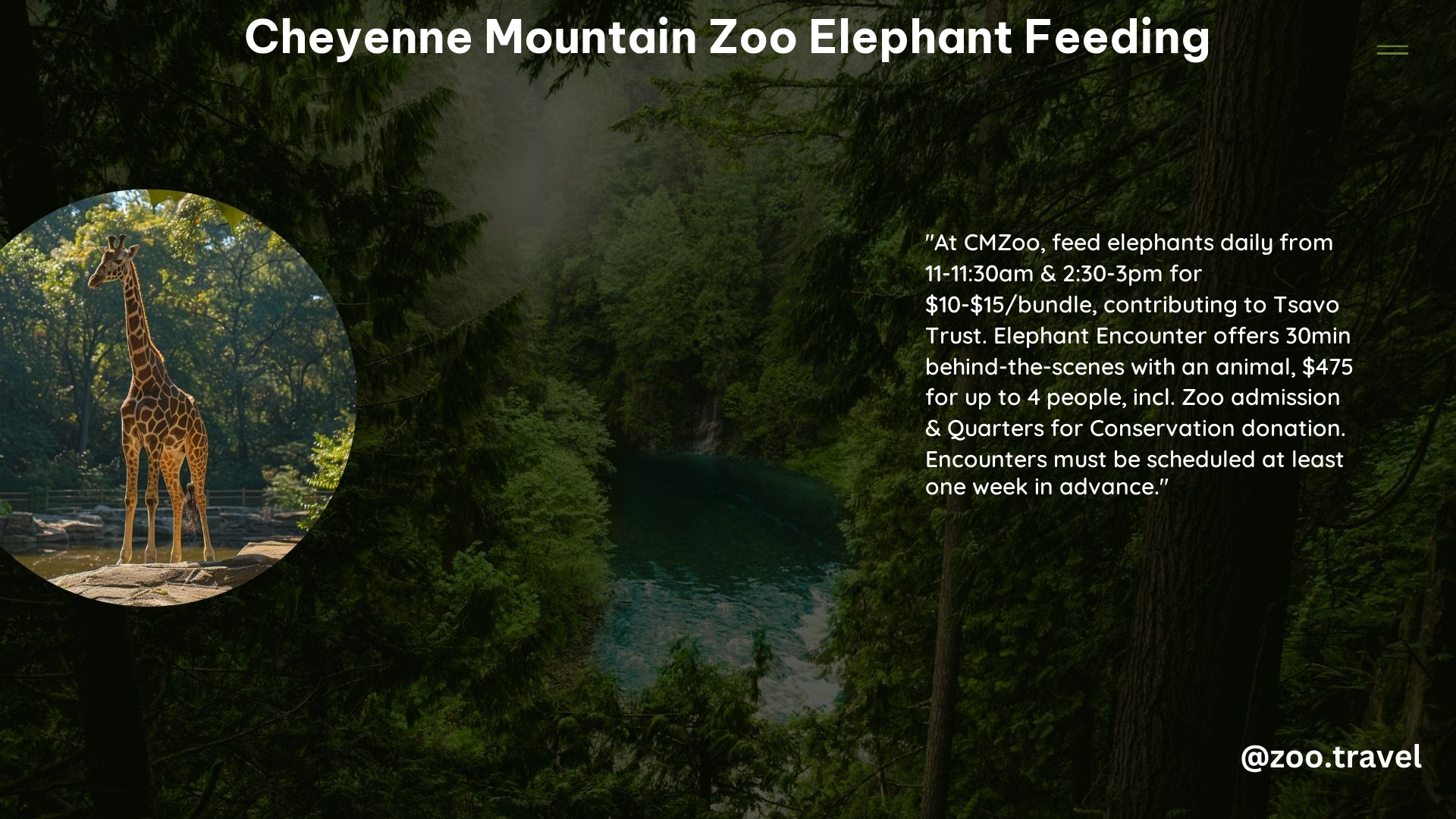The Cheyenne Mountain Zoo in Colorado Springs, Colorado, offers a unique and exciting opportunity for visitors to get up close and personal with its herd of African elephants. The Elephant Feeding experience allows guests to hand-feed these majestic creatures, creating a truly memorable encounter.
What is the Cheyenne Mountain Zoo Elephant Feeding?
The Cheyenne Mountain Zoo Elephant Feeding is a 30-minute interactive experience where visitors can purchase a bundle of produce and feed it directly to the zoo’s elephants. This activity takes place twice a day, from 11:00 AM to 11:30 AM and 2:30 PM to 3:00 PM, during the months of March through October, weather permitting.
Pricing and Availability

The Elephant Feeding experience at the Cheyenne Mountain Zoo costs between $10 and $15 per bundle of produce. The zoo typically offers this activity daily, but it’s important to check the schedule or call ahead to confirm availability, as it may be subject to change due to weather or other factors.
The Elephant Herd at Cheyenne Mountain Zoo
The Cheyenne Mountain Zoo is home to a herd of aging African elephants, including Jambo, Malaika, Lucky, LouLou, Kimba, and Missy. These elephants have a range of health issues, and the zoo’s dedicated elephant care team works tirelessly to ensure their comfort and well-being during their golden years.
The Elephant Encounter Experience
In addition to the Elephant Feeding, the Cheyenne Mountain Zoo also offers an Elephant Encounter experience. This 30-minute, behind-the-scenes encounter allows visitors to get even closer to the elephants and learn more about their care and conservation. The Elephant Encounter costs $475 for up to four people and includes admission to the zoo for the day. Guests can also add on an elephant painting for an additional $50, and children 2 years old and under are free.
Conservation Efforts
The Cheyenne Mountain Zoo’s Elephant Feeding and Encounter experiences not only provide visitors with unforgettable memories but also contribute to the zoo’s conservation efforts. The zoo donates $25,000 annually from the Elephant Feeding program to its frontline elephant and rhino conservation partner, Tsavo Trust.
Unique Features of the Cheyenne Mountain Zoo Elephant Feeding
The Cheyenne Mountain Zoo’s Elephant Feeding experience offers several unique features that set it apart from other similar experiences:
- Proximity to the Elephants: Visitors can feed the elephants from a distance of only about four feet, allowing for an incredibly close and personal encounter.
- Crane System: The zoo has a special crane system in the Wilgruen Elephant Center that has saved the life of one of the elephants, Malaika, on two occasions when she fell and couldn’t stand up on her own.
- Aging Elephant Herd: The Cheyenne Mountain Zoo’s herd of African elephants is aging, and the zoo’s dedicated elephant care team works hard to ensure their comfort and well-being during their golden years.
Tips for Enjoying the Cheyenne Mountain Zoo Elephant Feeding
To make the most of your Cheyenne Mountain Zoo Elephant Feeding experience, consider the following tips:
- Arrive early to secure a spot, as the experience is popular and can sell out quickly.
- Wear comfortable shoes and clothing, as you’ll be standing for the duration of the feeding.
- Bring a camera or smartphone to capture the unforgettable moments.
- Listen carefully to the instructions provided by the zoo staff to ensure the safety of both you and the elephants.
- Consider upgrading to the Elephant Encounter experience for an even more immersive and educational experience.
Conclusion
The Cheyenne Mountain Zoo Elephant Feeding is a truly unique and unforgettable experience that allows visitors to get up close and personal with these magnificent creatures. Whether you’re a seasoned zoo enthusiast or a first-time visitor, this activity is sure to leave a lasting impression and contribute to the zoo’s important conservation efforts.
